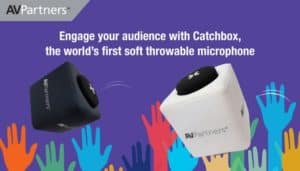For event planners, it’s important to make each of your events unique in order to encourage re-attendance, make your events memorable and promote your event messaging. Here are a few ways you can make every event unique.
Use lighting strategically
Lighting can be used to set your colour scheme, create a certain mood, revitalise guests, bring your theme to life and draw attention to areas within your event space. When used strategically, lighting can breathe life into your event agenda and can impress your guests. To make your event unique through strategic lighting, it’s important to use state-of-the-art technology and work with a team of lighting experts.
Theme your event
Theming your events is one of the most obvious ways to create a unique experience for guests. A theme is an idea or concept behind your event which can be brought to life through your visual elements, invitations, agenda, marketing, dress code, food and entertainment. By promoting your theme through all aspects of your event, you can make each event experience feel unique for guests.
Prioritise your styling
Styling creates the look and feel of your event. Event styling incorporates furniture, decor, table layouts, props, audiovisual and digital elements. It is one of the most effective ways to set the atmosphere of your event. How would you like your guests to feel at your event? Your styling will help you facilitate a certain event experience to make the day unique.
Hire entertainment
Impressive entertainment can really set your event apart from the rest. By choosing entertainment based on your theme, you can make each event unique. Entertainment doesn’t need to be limited to a musical act. You might consider hiring comedians, puppeteers, magicians, dancers, trapeze artists, balloon artists or DJs.
Incorporate augmented or virtual reality
Augmented reality involves computer-generated interactive elements appearing in the real world, usually viewed through a smartphone, tablet or headset. Virtual reality is a computer-generated experience, most commonly created through the use of a headset, that makes the user feel like they are in a different world. Using technology to create an augmented or virtual reality experience can provide an opportunity to promote your event messaging and branding and can create an exciting and unique experience for your guests.
Work with AVPartners
Through unique styling and exceptional lighting, the AVPartners team can help you put on an event that will wow your guests. Unlike most audiovisual teams who work with different event spaces for each of their events, AVPartners are AV experts in their own venues. The team is able to utilise every aspect and capability of the event space and technology to bring your event to life.
If you would like help making your next event unique through styling and audiovisual production, contact AVPartners today.
